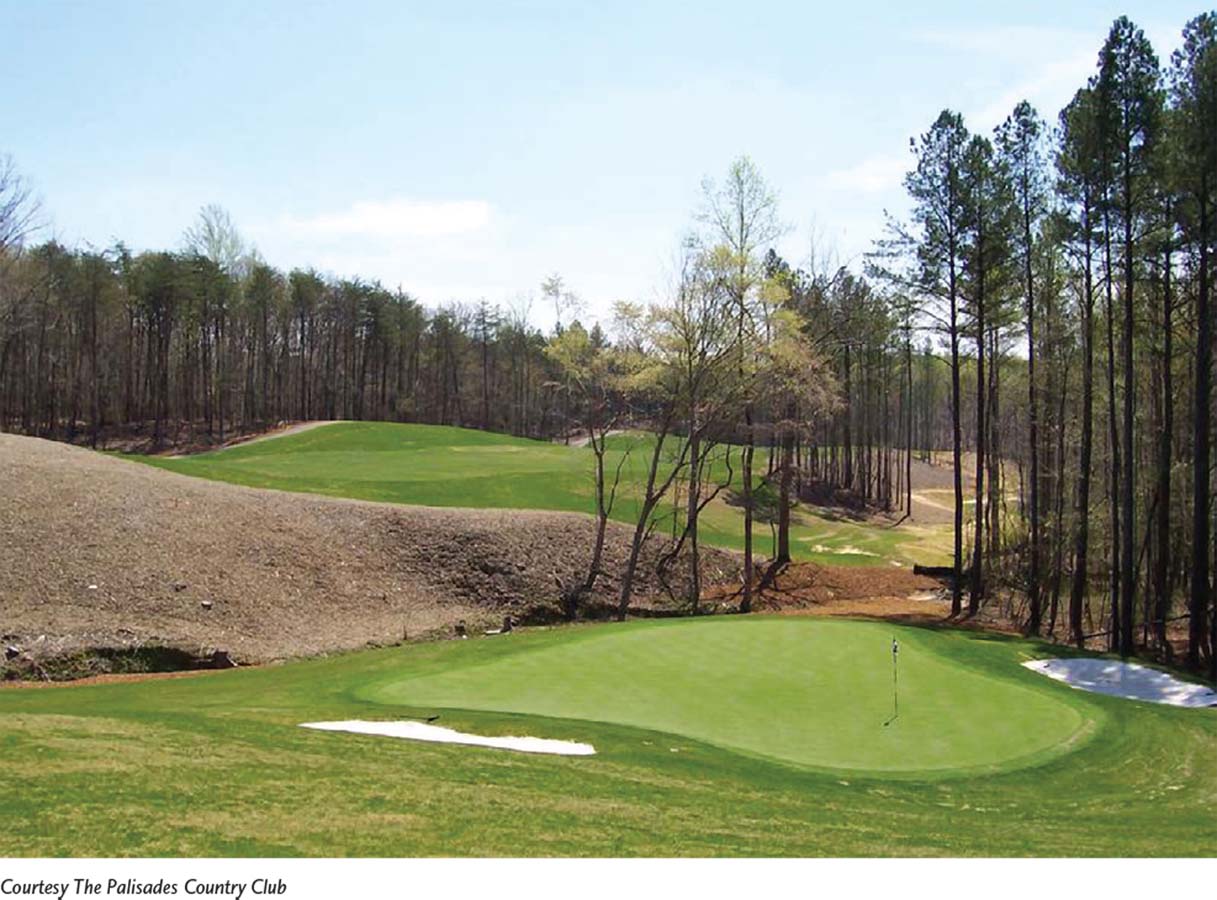Can We Make Golf Greens Greener?
Though golf is played outdoors on open green courses designed around the contours of the natural landscape, golf courses have a poor environmental reputation. Golf courses are highly managed ecosystems that cover over 3 million ha (7.5 million acres) worldwide—an area about the size of Belgium. About two-thirds of this area consists of closely mowed turfgrass. Closely mowed grass has short leaves that cannot gain enough energy from photosynthesis to grow deep roots. This causes the grass to dry out easily and makes it difficult to obtain soil nutrients. As a result, the grass is susceptible to challenges from weeds, grubs that feed on grass roots, and fungal diseases that can weaken or kill the grass.
To combat these challenges, golf courses use disproportionate amounts of water, fertilizer, and pesticides. Because humans expect to see green, well-manicured golf courses no matter where in the world they are located, golf courses collectively use 9.5 billion liters (2.5 billion gallons) of water annually to keep their grasses green. Much of this water is used in regions where water is scarce. In addition, providing the grass with sufficient nutrients requires a large amount of fertilizer. For example, the putting greens that surround each of the 18 holes in a golf course require as much nitrogen per hectare as corn, the heaviest nitrogen user of all major food crops. If the course requires irrigation soon after the application of fertilizer, or if it rains, up to 60 percent of the fertilizer can be leached into nearby waterways. To maintain a uniform texture on the greens, golf courses use about six times the amount of agricultural pesticides per hectare as do conventional farms. These chemicals include herbicides to remove weeds, insecticides to kill soil-dwelling grubs, and fungicides to control disease.
Since 1991, the Audubon Cooperative Sanctuary Program (ACSP), a partnership between Audubon International and the U.S. Golf Association, has been working to improve the environmental management of golf courses. The ACSP encourages golf course managers to develop courses that perform more like natural ecosystems, with nutrient and water recycling to reduce waste and biodiversity to increase ecosystem resilience. It also educates golf course managers about low-impact pest management, water conservation, and water quality management.
The golf course of the Palisades Country Club in North Carolina was constructed with natural ecosystem processes in mind. To prevent the runoff of nutrients and lawn-care chemicals into nearby waters, the course directs all runoff water through a treatment system. The course was designed to reduce the amount of closely mowed turfgrass. Deep-rooted native grasses surrounding the greens and fairways soak up nutrients and help to direct water underground. As a result, maintenance costs, chemical applications, and the time spent using machinery have all declined. Smaller areas of turfgrass also leave space for more native vegetation of various heights, providing better habitats for birds and predatory insects. These consumers keep pest populations low, which reduces the need for pesticides. When pesticides are used, they are chosen to protect nontarget wildlife and applied on wind-free days to keep them from spreading beyond where they are needed.

Making golf more sustainable. The Palisades Country Club in North Carolina is making its golf course more environmentally friendly by considering the important roles of natural ecosystem processes.
(Courtesy The Palisades Country Club)
By 2012, more than 2,400 golf courses worldwide were participating in the ACSP. Audubon International found that over 80 percent of the courses in the program reduced the amounts and toxicity of pesticides applied, improved nutrient retention within the course, and used less water for irrigation. The average course in the program saved about 7 million liters (1.9 million gallons) of water per year, and the amount of land area devoted to providing wildlife habitat increased by about 50 percent, from 18 to 27 ha (45 to 67 acres) per 60-ha (150-acre) golf course. Moreover, 99 percent of managers reported that playing quality and golfer satisfaction were maintained or improved.
Even with these changes, golf courses still require large amounts of water, nutrients, fossil fuel energy, and upkeep. Highly managed ecosystems cannot be made input free. However, within these limits, a growing number of courses are attempting to reduce their ecological footprint and make their greens greener.
Critical Thinking Questions
In addition to helping the environment, what factors do you think help motivate the golf course operators to join the Audubon Cooperative Sanctuary Program?
Is the high use of water, fertilizers, and pesticides on golf courses justified by the fact that it brings people outside to enjoy and appreciate nature?
Audubon Cooperative Sanctuary Program. http://www.auduboninternational.org/acspgolf.
Beecham,Tara. 2007. How green is your tee? Stormwater Features. http://www.stormh2o.com/september-2007/audubon-program-golf.aspx.
 sustainability
sustainability